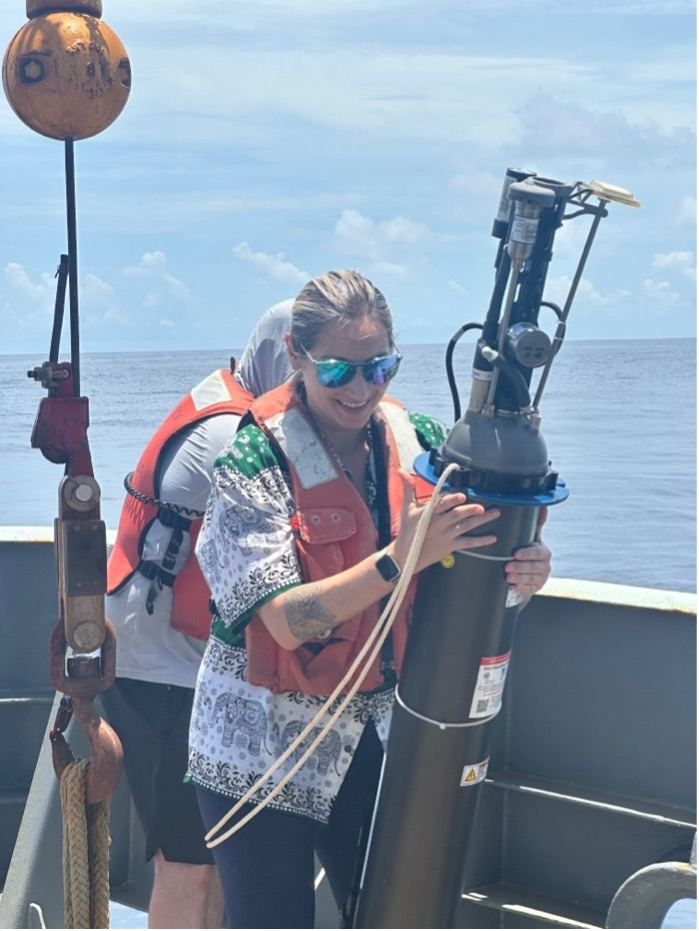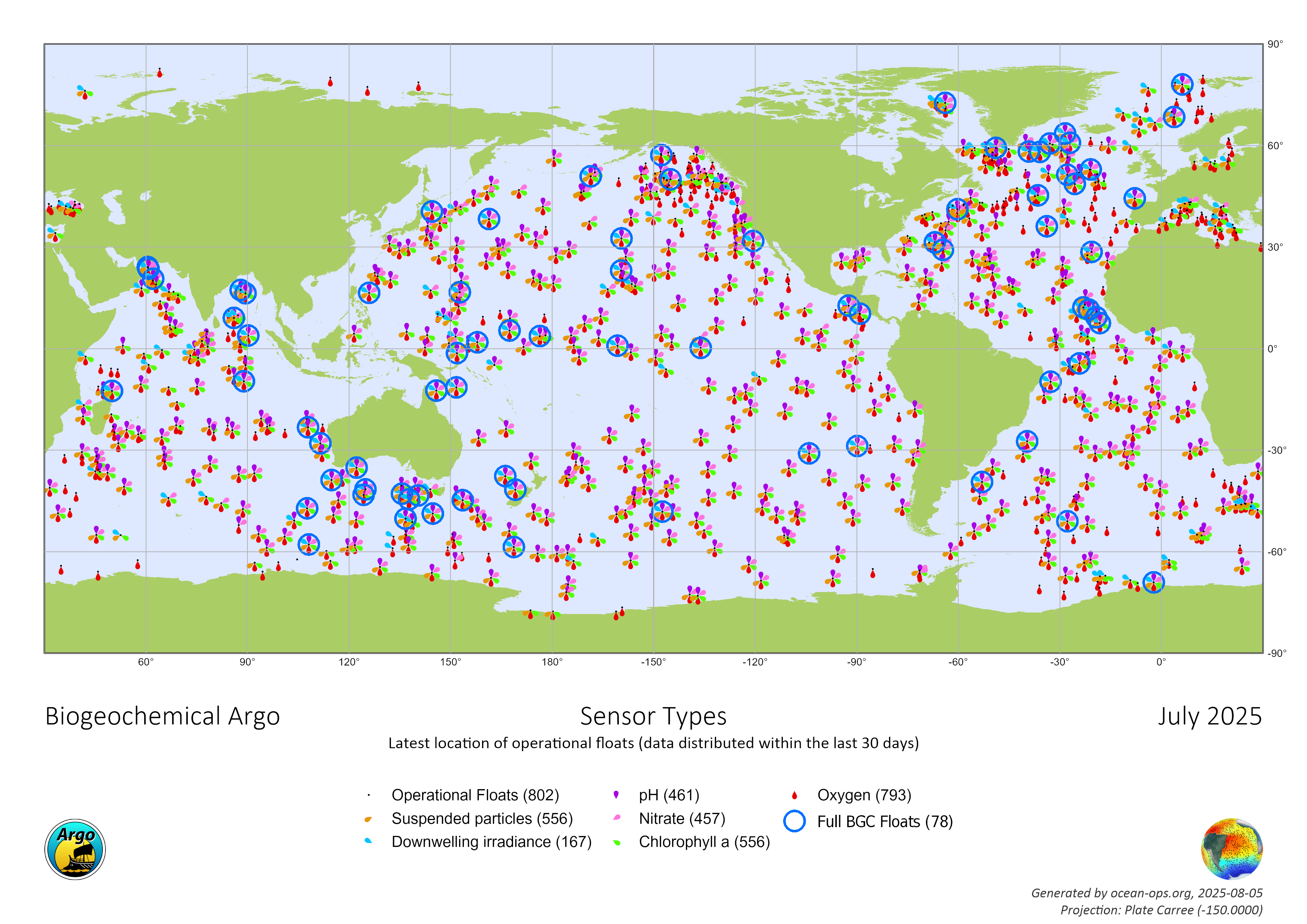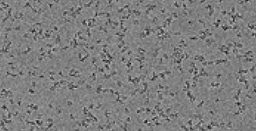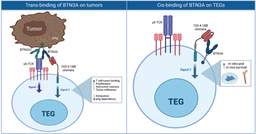When the Ocean Gets a Fever: Marine Heatwaves Reshape Food Webs and Carbon Flow
Published in Earth & Environment

But the ocean has its own version of these events, and they’re just as dramatic. Marine heatwaves, when seawater suddenly warms for weeks to years, have already been blamed for bird die-offs, collapsing fisheries, and even low whale birth rates. What’s been harder to see is what happens deep below the surface, where microscopic plankton quietly run the food web and power the ocean’s carbon cycle.
Until now.
The puzzle we couldn’t see
The infamous “Blob” that blanketed the Northeast Pacific from late 2013 through 2015, and then again in 2019-2020, was a dramatic wake‑up call for ocean lovers and coastal communities alike. On the Oregon coast, sea surface temperatures peaked in 2015, running as much as 2-3 °C above average, and lingered hot through mid‑2016 in the coast.
That prolonged warmth fueled by the strong 2015 El-Niño triggered a massive harmful algal bloom loaded with domoic acid (a nasty neurotoxin), which forced an extended delay of the 2015-16 Dungeness crab season, a core industry for West Coast communities. It was a major economic shock. The Dungeness crab fishery accounts for about 26 percent of all West Coast fishery revenue and supports over a quarter of all commercial fishing vessels. We saw birds starving, salmon returns crashing, and toxic blooms making seafood unsafe to eat. It was ecological chaos on display.
But down at the base of the food web? That was still a mystery.
Why? Because the food web’s foundation - bacteria, phytoplankton and zooplankton - works on scales of microns and days while most ocean sampling is episodic, like single frames from a movie. To really see how heatwaves ripple through this system, we needed the whole film at 4k resolution with observations before, during, and after the event.
Enter the robots
That’s where Biogeochemical Argo floats (BGC-Argo) came in. These free-drifting robotic instruments profile the ocean every 5 to 10 days, diving two kilometers deep and then surfacing to send back data via satellite. They measure temperature, salinity, nitrate, oxygen, chlorophyll, and, crucially for us, particle backscatter, a proxy for particulate organic carbon (POC). In plain terms: they track the tiny particles that form the “currency” of the ocean’s food web and carbon cycle.

Deployment of a BGC-Argo float by Mari Bif, the robotic instrument that helped uncover the hidden impacts of marine heatwaves. Image: Sudheesh Keloth
Pairing more than a decade of float data with seasonal pigment chemistry and DNA sequencing from ship surveys, we built a 360-degree picture of how the food web responded to the two successive marine heatwaves in the North Pacific.
What we found surprised us
During the second year of the first big heatwave (2013-2015), plankton communities shifted, and small carbon particles piled up in mid-depth waters around 200 meters of depth rather than sinking rapidly to the deep ocean.
In 2019, Blob 2.0 triggered record-high accumulation of carbon particles at surface already in the first year, but again much of it stalled in the midwater, trapped in what we call the mesopelagic “twilight zone.”
In both cases, the ocean’s biological carbon pump, normally a highway carrying carbon from the surface to the abyss, jammed. Instead of sinking and being locked away in the deep ocean for centuries, much of that carbon lingered in mid-depths and was slowly respired back to CO2, reducing the ocean’s ability to buffer climate change.

Green shading shows particles (POC) piling up in the twilight zone of the North Pacific Ocean during heatwaves. Instead of sinking quickly, they lingered for months before slowly disappearing.
The culprit wasn’t just physics; it was the food web itself. DNA and pigment analyses revealed that plankton lineages rose and fell during the heatwaves. The copepods that usually drive carbon export shifted: herbivores declined, while opportunistic detritus-feeders gained ground. Radiolarians appeared for the first time, tiny glassy drifters famous for boosting carbon export elsewhere. At the same time, copepod parasites spiked, hinting at possible disease outbreaks, and zooplankton recycled carbon locally instead of sending it deeper. In short, the ocean’s invisible middle managers rewrote the carbon budget.
Why it matters
The ocean absorbs a quarter of the CO₂ we emit each year. That service depends heavily on the biological carbon pump, the steady rain of organic particles sinking out of the surface. When marine heatwaves interrupt that highway, it means less carbon gets sequestered long-term, and more stays near the surface to exchange back with the atmosphere. And it was not because of lack of productivity: we saw high carbon production through photosynthesis. But this carbon just did not sink deep enough.
In a warming world where marine heatwaves are becoming longer, hotter, and more frequent, this isn’t just a curiosity. It’s feedback. A warmer ocean can mean less carbon locked away, which in turn accelerates climate change.
And beyond the carbon math, the shifts we saw highlight just how fragile marine ecosystems are. If the plankton base tilts, so do the fish, birds and mammals that depend on it.
The road ahead
This research was only possible because of sustained, high-resolution observations with robotic floats, pigment chemistry and genetic sequencing all working together. Each tool tells part of the story; together, they reveal the hidden choreography of the food web.

Looking forward, the challenge is clear: we need more of these eyes and sensors in the water. Marine heatwaves are not rare flukes anymore; they are the new normal. Without continuous monitoring, we risk missing how ecosystems adapt or fail to. Over a decade after the first “Blob,” a third massive marine heatwave is now unfolding across the Pacific (CNN, 2025). It’s both déjà vu and escalation, encompassing the entire North Pacific basin. It will test how resilient its ecosystems, and our observing systems, truly are.
For me, that’s both sobering and motivating. When I watch a float disappear beneath the waves, I know it’s carrying the potential to change how we understand the ocean’s role in our future as species.
So, the next time you hear about a heatwave on land, remember: the ocean might be running a fever too. And just like in people, those fevers can ripple through the entire system, from plankton to whales, and from ocean carbon particles to the air above us.
Follow the Topic
-
Nature Communications

An open access, multidisciplinary journal dedicated to publishing high-quality research in all areas of the biological, health, physical, chemical and Earth sciences.
Related Collections
With Collections, you can get published faster and increase your visibility.
Women's Health
Publishing Model: Hybrid
Deadline: Ongoing
Advances in neurodegenerative diseases
Publishing Model: Hybrid
Deadline: Dec 24, 2025





Please sign in or register for FREE
If you are a registered user on Research Communities by Springer Nature, please sign in